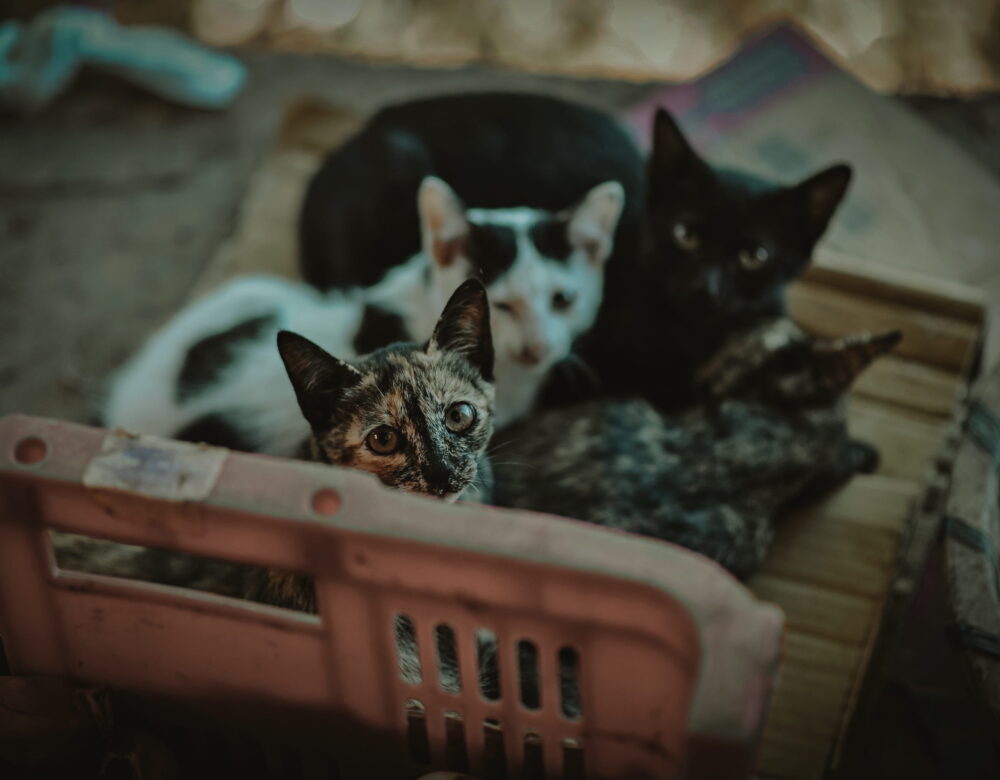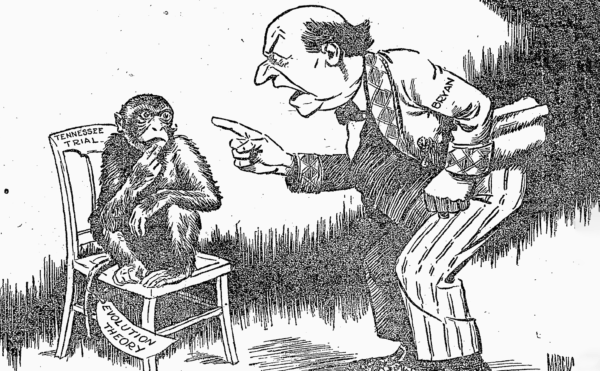It sounds like something out of a sci-fi horror movie—689 cats taking over a house, their owners obsessed with adding more felines to the ranks and keeping them fed and sheltered at any cost. But this seemingly fictional story actually happened. And the theories about why introduced an interesting culprit: a microbe so ruthless it would put Machiavelli to shame.
About The Disappearing Spoon
Hosted by New York Times best-selling author Sam Kean, The Disappearing Spoon tells little-known stories from our scientific past—from the shocking way the smallpox vaccine was transported around the world to why we don’t have a birth control pill for men. These topsy-turvy science tales, some of which have never made it into history books, are surprisingly powerful and insightful.
Credits
Host: Sam Kean
Senior Producer: Mariel Carr
Producer: Rigoberto Hernandez
Associate Producer: Sarah Kaplan
Audio Engineer: Rowhome Productions
Transcript
Sometimes you acquire wisdom the hard way. A man named Jack Wright once said, “You can visualize a hundred cats. Beyond that, you can’t. Two hundred, five hundred, it all looks the same.”
This wasn’t just speculation on Wright’s part. He knew this because he and his wife Donna once owned a world record 689 housecats.
It all started with the first cat, Midnight. Wright was a house painter in Ontario. He fell in love with a waitress named Donna around 1970, and they moved in together with Donna’s her black cat, Midnight.
Well, Midnight got a little frisky in the yard one night and got pregnant. The Wrights didn’t have the heart to break up the litter. And having more cats actually brightened up the home. In fact, they started adopting strays from the local shelter to save them from being put down.
Their house became known as Cat Crossing. After that, people began dropping off more strays. Two here. Five there. When the National Enquirer held a contest in the 1980s to determine who had the most cats in one house, the Wrights won with 145.
They soon appeared on The Phil Donahue Show. After that, the “donations” of cats really got bad. One person shipped a cat to the Wrights via a courier on a plane—and made the Wrights pay. But the Wrights turned no feline away, even as their brood swelled toward seven hundred.
So what causes someone to do this? It can be risky to speculate on people’s psychology from afar. But one potential factor might surprise you—a microbe.
And not just any microbe. A Machiavellian microbe. One that not only colonizes huge numbers of animals but steals animal DNA. And then uses that DNA to brainwash them for its own destructive ends.
With 689 cats, the bills at Cat Crossing ran to $111,000 per year. This included individually wrapped Christmas toys. Donna rose daily at 5:30 a.m. and spent the next fifteen hours washing cat beds, emptying litter boxes, and forcing pills down cats’ throats. She even had to add ice to kitty bowls, because the friction of so many cats’ tongues made the water too warm to drink otherwise.
But above all Donna spent her days feeding cats. It was endless. She opened 180 tins of cat food each day, and thawed endless shanks of pork, ham, and sirloin from the three extra freezers they’d bought. They eventually took out a second mortgage to pay for it all. And they had to tack linoleum on the walls to keep their bungalow clean.
Overall, the Wrights seemed almost addicted to having cats around—addiction being that maddening state of deriving pleasure and pain from the same thing.
As for pleasure, clearly the Wrights loved the cats. Jack defended his cat “family” in the newspapers and gave each cat an individual name. These included: Stinky, Pinky, Blindy, Sam, Muffin, Tortoise, Pumpkin, Yankee, Yappy, Boots the First, Second, and Third, Tigger, Whisky, and Stray. They even named the cats that refused to leave Jack’s closet.
At the same time, the cats were ruining their lives. Donna once admitted, “I get a little depressed sometimes. Sometimes I just say, ‘Jack, give me a few bucks.’ I go out and have a beer or two. I sit there for a few hours and it’s great. it’s peaceful—no cats.”
Despite such moments of clarity, and despite their mounting debts and distress, she and Jack couldn’t take the next obvious step and, you know, get rid of the cats.
And the Wrights are hardly alone here. Donna at least kept their house clean. Some people who hoard cats have almost prehistoric levels of filth in their homes. Animal welfare agents find cat corpses at the worst places. Sometimes inside the walls, where the cats burrowed to escape. Nor is it uncommon for the floors and walls to rot and suffer structural damage from saturation with cat pee.
Strikingly, many cat hoarders deny that things are out of control—a classic sign of addiction.
Scientists have only recently begun laying out the neurological basis of addiction. But in this specific kind of addiction–hoarding cats—a parasite might be to blame. Specifically Toxoplasma gondii.
Toxo is a one-celled protozoan, similar to an amoeba. It has eight thousand genes. It evolved as a parasite in cats. But over the eons, it diversified its portfolio and can now infect many animals—monkeys, bats, whales, elephants, aardvarks, sloths, and chickens, among others.
Animals usually ingest Toxo through infected prey or feces. Humans can absorb Toxo through their diets, and cat owners can contract it through their skin when they handle kitty litter. Overall it infects roughly ⅓ of people worldwide.
When Toxo invades mammals, it usually swims straight for the brain. There, it forms tiny cysts. They’re especially common in the amygdala. That’s an almond-shaped region that processes emotions, including pleasure and anxiety.
Studies show that, for some reason, Toxo cysts in the amygdala can slow down people’s reaction times. They can also induce jealous or aggressive behavior.
Toxo does even stranger things to rodents, a common meal for cats. There are rodents out there whose ancestors have been raised in labs for hundreds of generations. They’ve never seen a predator in their entire lives. Not one, Yet, they’ll still quake in fear and scamper toward shelter if exposed to the smell of cat urine. The fear of cats is an instinctive, hardwired response.
But rodents exposed to Toxo have the opposite reaction. They still fear other predators’ odors. And they otherwise sleep, mate, navigate mazes, nibble cheese, and do everything else normally. But they adore cat urine.
In fact, they more than adore it. At the first whiff of cat urine, the amygdalas of infected male rodents start to throb. It’s the same reaction they have when they meet female rats in heat. Their testicles swell, too. In short, they’re aroused by cat urine.
Toxo toys with rodents like this to enrich its own sex life. Like most microbes, Toxo can fission into two and reproduce asexually.
But unlike most microbes, Toxo can also have sex and reproduce sexually—but only inside the intestines of cats. It’s a weirdly specific fetish, but there it is.
Like most organisms, Toxo craves sex. So it’s always scheming to get back inside cat guts. Urine is its opportunity. By making rodents attracted to cat urine, Toxo can lure them out of hiding. Cats happily play along and pounce. After that, the rodent ends up in the cat digestive tract—right where Toxo longs to be.
So how does Toxo actually pull off this manipulation? Among its eight thousand genes, Toxo has two genes that help make a chemical called dopamine.
Dopamine activates the brain’s reward circuits. It floods us with good feelings, natural highs. Cocaine, ecstasy, and other drugs also play with dopamine levels. And Toxo has the gene for this potent, habit-forming drug twice in its repertoire. So whenever an infected brain senses cat urine, consciously or not, Toxo starts pumping dopamine out. As a result, Toxo gains influence over the creature’s behavior.
Toxo isn’t the only parasite that can manipulate animal behavior. Much like Toxo, there’s a microscopic worm that prefers spending its days in the guts of birds. Unfortunately, it often gets ejected from this paradise inside bird droppings.
At this point, the worms enact Plan B. First, they wriggle into ants. Then they turns the ants cherry red and puff them up like Violet Beauregarde in Willy Wonka’s Chocolate Factory. Birds then think they’re berries and gobble them up—along with the worm inside.
Carpenter ants also fall victim to a fungus that turns them into mindless zombies. First the fungus hijacks an ant’s brain. Then it pilots the ant toward a location with good moisture, like the underside of a leaf.
Upon arriving, the zombie ant bites down, and its jaws lock into place. The fungus now turns the ant’s guts into a sugary, nutritious goo it can eat. Then the fungus shoots a stalk out of the ant’s brain, and it sends out spores to infect more ants, which starts the cycle again.
There’s also the so-called Herod bug, the Wolbachia bacteria. This bug infects wasps, mosquitoes, moths, flies, and beetles. Wolbachia can reproduce only inside female insects’ eggs. So, similar to Herod in the bible, it often slaughters young male wholesale, by releasing genetically produced toxins.
In certain species, Wolbachia does something even crazier. It fiddles with the genes that determine sex in insects. It thereby converts male grubs into female ones. In which case a better nickname might be the Tiresias bug.
Beyond creepy-crawlies, microbes can also manipulate fish. There’s a certain flatworm that needs to get inside seabirds to complete its life cycle. So if it finds itself in water, it infects the first fish it can find.
It then starts messing around with the brain chemistry of the fish. It manipulates the levels of serotonin and other chemicals. This makes the fish relax more, and stop worrying. As a result, the fish spends more time near the surface. The fish also exposes its white underbelly more, perhaps to soak up sunshine. All of which makes the fish easier for birds to grab.
Still, not all microbial manipulation is bad or deadly. Take voles. They’re a type of burrowing rodent. Male voles are normally polyamorous. As one scientist put it, they have a “country music, love ’em and leave ’em” attitude toward female voles.
But if you infect the voles with a certain virus that’s been tweaked in the lab, the male voles transform into utterly faithful, monogamous mates.
Some scientists have argued that the virus even makes the voles smarter. Instead of blindly having sex with whatever female wanders by, the males are now associating sex with one individual. That trait is called “associative learning.” And it was utterly beyond the voles’ ability before.
Microbes can change wolf behavior, too. In Yellowstone National Park, some wolves are infected with Toxo, the same parasite mentioned above. They probably get from it mountain lions or cougars—perhaps when scavenging the big cats’ food or eating their scat.
Biologists who have studied the wolves have determined the presence of Toxo in the brain turns the wolves into risk-takers. Infected wolves are 11 times more likely to leave their home pack for another pack.
And they’re a whopping 46 times more likely to be the pack’s leader, male or female. To ascend in a pack’s hierarchy you have to fight, and Toxo apparently makes them more likely to risk fighting. You can’t win if you don’t try, and Toxo makes them try over and over and over.
These stories about wolves and voles being manipulated can edge over into some uncomfortable territory for human beings. After all, we’re a species that prizes autonomy and intelligence. It’s one thing to find out that parasites are manipulating insects. But mammals? That hits close to home.
And it gets worse. Remember, rodents infected with Toxo lose all fear of cat urine. Well, chimpanzees infected with Toxo no longer fear the smell of leopard urine. That makes them easier targets for hunting. So great apes can have their minds manipulated, too.
Perhaps humans can as well. Indeed, while it’s speculative, the fact that Toxo manipulates dopamine levels might—might—provide a plausible, biological basis for hoarding cats.
Scientists already know that Toxo can alter people’s sense of smell. Well, some cat hoarders become immune to the pungent odor of cat urine; they stop smelling it. Others reportedly crave the odor—exactly like those rodents who ran willy-nilly toward their doom.
Regardless of the exact reason why Jack and Donna Wright hoarded cats, the story of Cat Crossing did not end well.
They did put their feet down at one point and start getting rid of cats. And by the late 1990s, they’d managed to whittle the population down to just 359. But almost immediately it crept back up, because they just couldn’t bear to go lower.
In addition to the $111,000 in yearly expenses, there were occasional unexpected costs. Once, an animal rights activist cut a hole in the fence to spring as many cats as possible. Dozens escaped. Still, Jack said there were still so many cats around that they didn’t notice. Not until a nun knocked on their door and asked if all the cats climbing onto roofs throughout the neighborhood were theirs. Um, yes. Yes, they were.
And the bills just kept piling up higher. Creditors nearly seized their home. Only donations from cat lovers saved them.
But even after this crisis passed, the daily hassles continued. One visitor reported that they never had any new clothes, never any new furniture, never any vacations. If they rose in the night to go to the bathroom, the dozens of cats on their bed would snuggle into the warm hollow, leaving no room to crawl back beneath the covers.
Donna seemed especially depressed. As she once said, “Sometimes you think [living here] will make you crazy. I cry just about every day in the summertime.” She eventually moved out.
But she quickly got drawn back in, unable to walk away. Despite living apart, she returned everyday at dawn to help Jack cope.
Now, to be scrupulous, we can’t say for sure that Toxo played a role with Jack and Donna Wright. Plus, scientists have not yet run controlled studies on the correlation between Toxo levels in the brain and hoarding. So it’s possible that the link between Toxo, dopamine, cats, and hoarding could come to nothing.
Nor can Toxo explain everything about hoarding behavior, since people occasionally hoard dogs, too. But most animal hoarders do hoard felines, and scientists involved in the Toxo studies find the link plausible and have said so publicly.
They’ve simply seen too much evidence of how Toxo can change the hardwired behavior of rodents and other creatures. So again, it could provide a plausible biological basis for hoarding cats. And regardless of how strong its influence turns out to be, Toxo still seeps dopamine into many people’s brains, which can affect our behavior in lots of ways.
There’s also anecdotal evidence that Toxo can alter other signals in the human brain, ones unrelated to cats. It might be converting these impulses into ecstatic pleasure as well.
Some doctors in emergency rooms have reported that motorcycle crash victims often have unusually high numbers of Toxo cysts in their brains. These are the hotshots flying along highways and cutting turns as sharp as possible: people who enjoy risking their lives. And it just so happens that their brains are riddled with Toxo.
Such work can be both fascinating and upsetting in turn. One Stanford University neuroscientist who studies Toxo put it best. He said, “It’s slightly frightening in some ways. We take fear to be basic and natural. But [Toxo] can not only eliminate [fear] but turn it into this esteemed thing—attraction. Attraction can be manipulated so as to make us attracted to our worst enemy.”
That’s why Toxo deserves the title of the Machiavellian microbe. Not only can it manipulate us, it can make what’s dangerous, and even evil, seem appealing.




